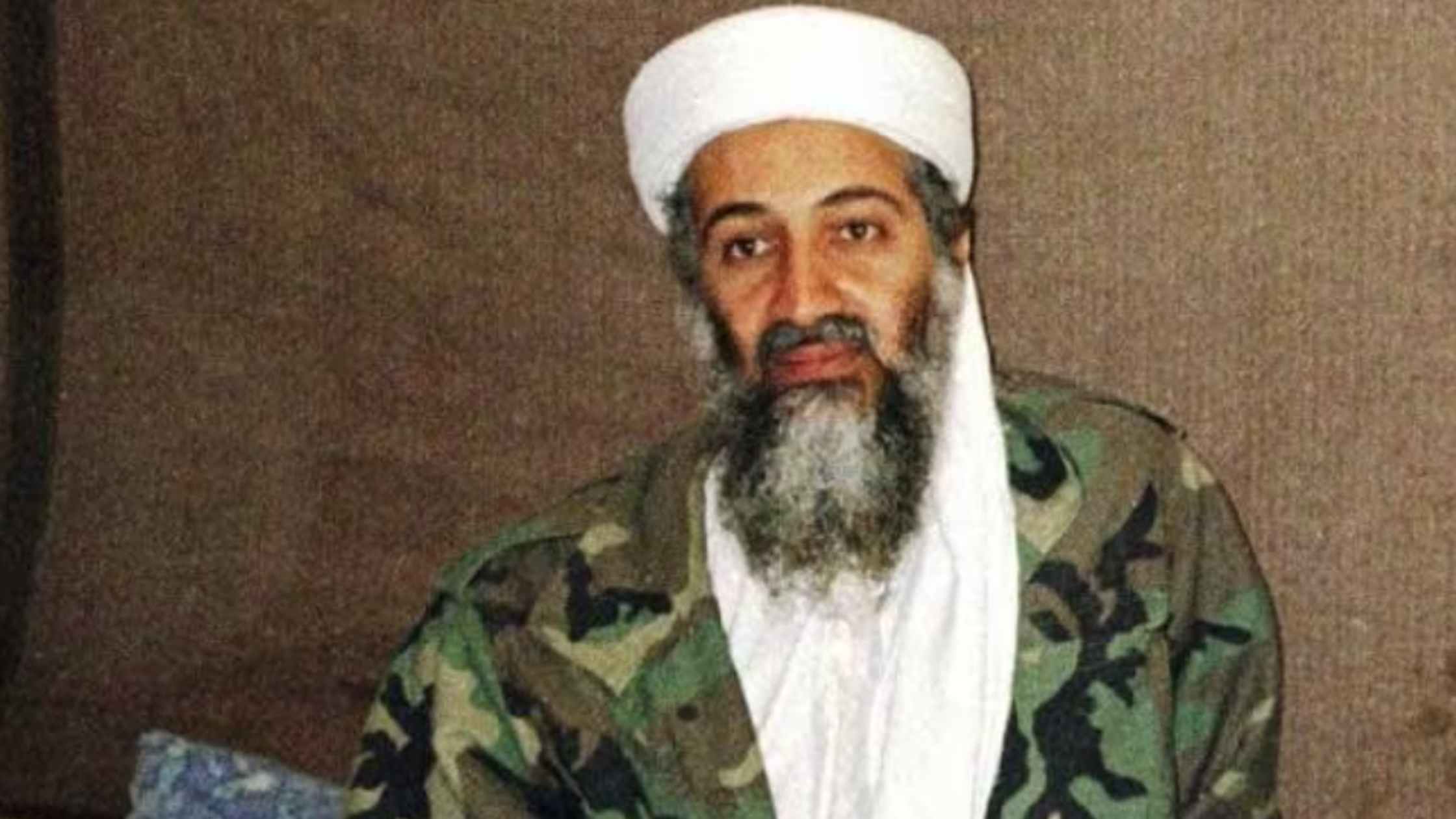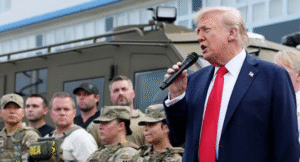Osama bin Laden, the mastermind behind the September 11 attacks, left an indelible mark on U.S. history. While many are familiar with the major events, several lesser-known aspects of his life and actions significantly influenced American policies and global dynamics. This article delves into seven untold secrets about Osama bin Laden that reshaped the United States.
1. The Missed Opportunity at Tora Bora
In December 2001, U.S. forces had a prime opportunity to capture Osama bin Laden in the Tora Bora mountains of Afghanistan. Despite intelligence pinpointing his location, a combination of strategic hesitations and reliance on Afghan militias allowed him to escape. This decision has been widely criticized, with former CIA officials acknowledging it as a significant missed chance to end the hunt early. The escape prolonged the war in Afghanistan, leading to extended U.S. military involvement and increased casualties. It also allowed bin Laden to continue directing al-Qaeda operations from undisclosed locations. The Tora Bora episode underscores the complexities and challenges of military decision-making in real-time combat situations. It remains a topic of analysis in military and intelligence communities, reflecting on how different choices might have altered the course of history. The event also influenced U.S. military strategies in subsequent operations, emphasizing the need for decisive action when high-value targets are within reach. Overall, the Tora Bora incident is a stark reminder of how pivotal moments can have long-lasting consequences.
2. Taliban’s Pre-9/11 Offer to Extradite Bin Laden
Before the September 11 attacks, the Taliban reportedly offered to hand over Osama bin Laden to a third country, provided the U.S. presented evidence of his involvement in terrorist activities. The U.S. government declined, demanding unconditional surrender. This refusal is now scrutinized as a potential missed opportunity to prevent the 9/11 attacks. The complexities of international diplomacy and the challenges of negotiating with regimes like the Taliban come into focus here. The incident underscores the importance of considering all diplomatic avenues in counterterrorism efforts. It also raises questions about the balance between justice and pragmatism in foreign policy decisions. The aftermath of the refusal led to a significant escalation in hostilities and the eventual U.S. invasion of Afghanistan. Analyzing this episode provides insights into the decision-making processes that can have far-reaching consequences. It serves as a reminder of the potential costs of missed diplomatic opportunities.
3. Early Connections with the CIA
During the Soviet-Afghan War in the 1980s, the CIA supported Afghan mujahideen fighters resisting Soviet occupation. Osama bin Laden was among those who joined the conflict, providing financial and logistical support. While the extent of direct collaboration between bin Laden and the CIA remains debated, it’s clear that U.S. support for the mujahideen indirectly benefited him. This period was formative for bin Laden, allowing him to build networks and gain experience in guerrilla warfare. The unintended consequences of U.S. foreign policy during this era became evident in later years. Bin Laden’s transformation from an ally against the Soviets to the mastermind of attacks against the U.S. illustrates the complexities of international alliances. The episode serves as a cautionary tale about the long-term implications of foreign interventions. It also highlights the challenges in predicting how today’s allies might evolve into tomorrow’s adversaries. The CIA’s involvement in Afghanistan during the 1980s remains a subject of extensive analysis and debate.
4. Bin Laden’s Strategic Use of Media
Osama bin Laden was adept at utilizing media to propagate his ideology and influence global perceptions. He released numerous video and audio messages, often timed to coincide with significant events or to respond to U.S. actions. These communications served to inspire followers, issue threats, and maintain his presence in the public consciousness. Bin Laden’s media strategy was a key component of his asymmetric warfare approach, leveraging information to compensate for military disadvantages. His ability to manipulate media narratives challenged traditional state-controlled information dissemination. The U.S. and other governments had to adapt to this new form of propaganda warfare. Bin Laden’s media tactics have influenced other terrorist organizations, highlighting the evolving nature of information warfare. Understanding his approach provides valuable lessons in countering extremist messaging. It also emphasizes the importance of strategic communication in modern conflict scenarios.
5. The Abbottabad Compound’s Proximity to Military Institutions
Bin Laden’s hideout in Abbottabad, Pakistan, was located merely a mile away from the Pakistan Military Academy. This proximity raised suspicions about possible complicity or negligence within Pakistani military and intelligence circles. The discovery strained U.S.-Pakistan relations, leading to increased scrutiny and demands for accountability. Pakistan’s government denied any knowledge of bin Laden’s presence, but the situation highlighted issues of trust and cooperation between the two nations. The incident prompted the U.S. to reevaluate its intelligence-sharing protocols with Pakistan. It also led to debates about the effectiveness of Pakistan’s counterterrorism efforts. The Abbottabad raid underscored the challenges of conducting operations in sovereign nations without prior consent. It also sparked discussions on the balance between respecting national sovereignty and addressing global security threats. The event remains a pivotal moment in U.S.-Pakistan relations and counterterrorism history.
6. Bin Laden’s Vision for a Global Islamic Caliphate
Osama bin Laden’s ultimate goal extended beyond retaliatory attacks; he envisioned the establishment of a global Islamic caliphate. He believed that by provoking the U.S. into prolonged conflicts in Muslim-majority countries, he could galvanize support for his cause. Bin Laden aimed to exploit the resulting chaos to overthrow existing governments and replace them with regimes adhering to his interpretation of Islamic law. This grand strategy influenced al-Qaeda’s operations and recruitment efforts. While his vision was not realized, it inspired other extremist groups with similar objectives. Understanding bin Laden’s broader ambitions provides context for the motivations behind various terrorist activities. It also highlights the importance of addressing ideological narratives in counterterrorism strategies. Countering such visions requires not only military action but also efforts to undermine the ideological appeal of extremist ideologies. Bin Laden’s aspirations continue to influence global security dynamics and counterterrorism policies.
7. The Impact on U.S. Domestic Policies and Civil Liberties
In the aftermath of 9/11, the U.S. government implemented sweeping changes to its domestic policies, significantly impacting civil liberties. The USA PATRIOT Act expanded surveillance capabilities, raising concerns about privacy and government overreach. Airport security measures became more stringent, altering the travel experience for millions. The Department of Homeland Security was established, representing the largest reorganization of the federal government in decades. These changes aimed to prevent future terrorist attacks but also sparked debates about the balance between security and individual freedoms. The long-term effects of these policies continue to shape American society and governance. The legacy of bin Laden’s actions is evident in the ongoing discussions about national security and civil rights. Understanding this impact is crucial for evaluating current and future policy decisions. The events following 9/11 serve as a case study in crisis response and its implications for democratic societies.
Comparative Overview of Key Events
| Event | Description | Impact |
|---|---|---|
| Tora Bora Escape | Bin Laden evaded capture in 2001 due to strategic hesitations. | Prolonged U.S. involvement in Afghanistan. |
| Taliban’s Extradition Offer | Taliban offered to hand over bin Laden before 9/11. | Missed opportunity to prevent attacks. |
| CIA Connections | U.S. supported mujahideen during the Soviet-Afghan War. | Indirectly empowered future adversaries. |
| Media Strategy | Bin Laden utilized media to spread ideology. | Influenced global perceptions and inspired followers. |
| Abbottabad Compound | Bin Laden hid near a Pakistani military academy. | Raised questions about Pakistan’s role. |
| Caliphate Vision | Sought to establish a global Islamic caliphate. | Inspired extremist groups worldwide. |
| Domestic Policy Changes | Post-9/11 security measures were implemented. | Altered civil liberties and government structure. |
New Revelations on Osama bin Laden: Unveiling Critical Insights Beyond the Known Narrative
While much has been documented about Osama bin Laden’s life and the global manhunt that culminated in his death, recent findings have surfaced, shedding light on previously undisclosed aspects of his operations and the aftermath. These revelations offer a deeper understanding of the complexities surrounding bin Laden’s activities and their enduring impact.
Bin Laden’s Miscalculation of U.S. Response Post-9/11
Declassified documents obtained by U.S. Navy SEALs during the 2011 raid reveal that Osama bin Laden anticipated a restrained U.S. reaction following the September 11 attacks. He believed that the U.S. would respond with limited military action, allowing al-Qaeda to regroup and plan subsequent attacks. Contrary to his expectations, the U.S. launched extensive military operations in Afghanistan, dismantling al-Qaeda’s infrastructure and capturing key operatives. This misjudgment significantly hindered al-Qaeda’s capabilities and disrupted their plans for further large-scale attacks.
The Role of Bin Laden’s Family in Al-Qaeda’s Continuity
Recent reports indicate that bin Laden’s son, Hamza bin Laden, presumed dead in earlier accounts, is alive and actively involved in al-Qaeda’s operations. Intelligence suggests that Hamza, along with his brother Abdullah, is playing a pivotal role in reorganizing the group’s activities and strategizing future attacks. Their involvement underscores the familial continuity within al-Qaeda’s leadership and the persistent threat the organization poses.
The Abbottabad Compound: A Hub of Isolation and Strategy
Further investigations into bin Laden’s life in the Abbottabad compound reveal that he remained entirely within the premises from 2005 until his death in 2011. Despite health issues, he avoided seeking external medical assistance, relying solely on his aides. This self-imposed isolation was a strategic move to evade detection, allowing him to continue directing al-Qaeda’s operations discreetly.
Al-Qaeda’s Evolution Post-Bin Laden
In the years following bin Laden’s death, al-Qaeda has undergone significant structural changes. Under the leadership of Ayman al-Zawahiri, the organization has decentralized, allowing regional affiliates greater autonomy. This shift has enabled al-Qaeda to adapt to local contexts, maintaining its relevance and operational capabilities despite the loss of its central figure.
The Enduring Influence of Bin Laden’s Ideology
Bin Laden’s ideological legacy continues to resonate, particularly among younger generations. His “Letter to America,” a document justifying the 9/11 attacks, has seen a resurgence on social media platforms, sparking debates and discussions. This renewed interest highlights the ongoing challenge of countering extremist narratives and the importance of addressing the root causes of radicalization.
[USnewsSphere.com / IT.]





